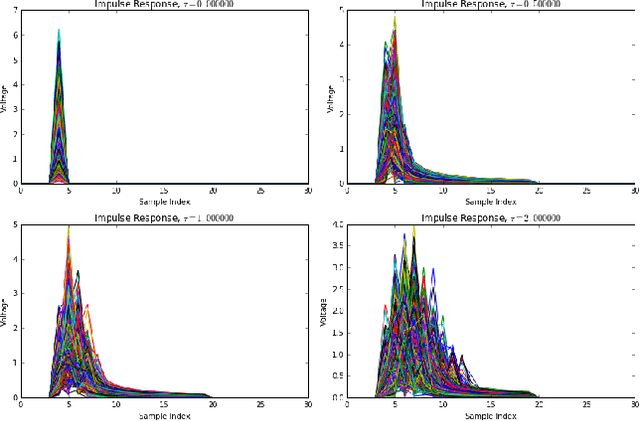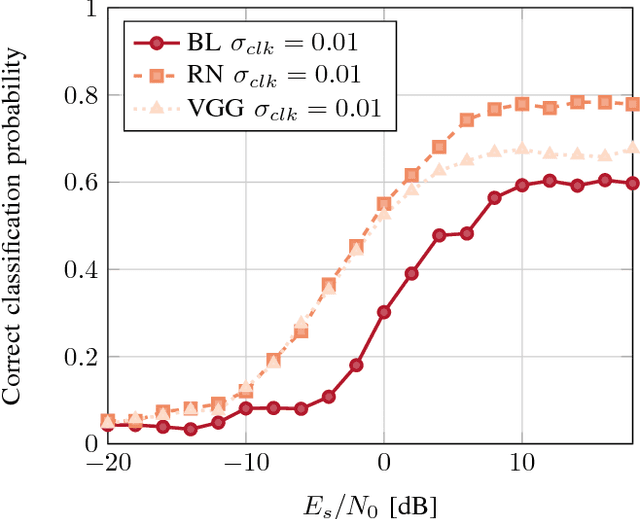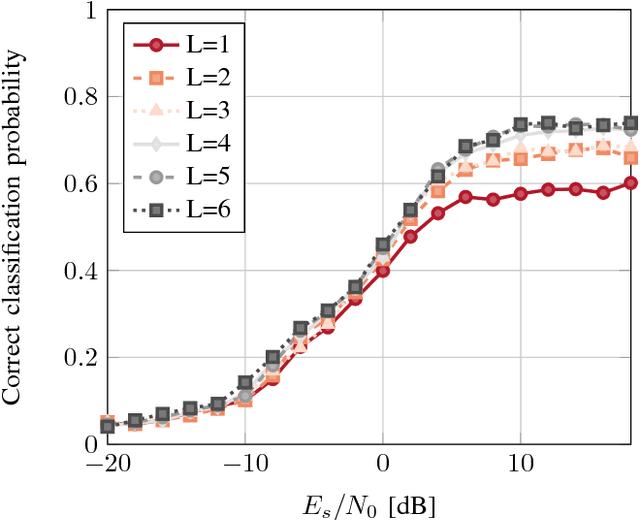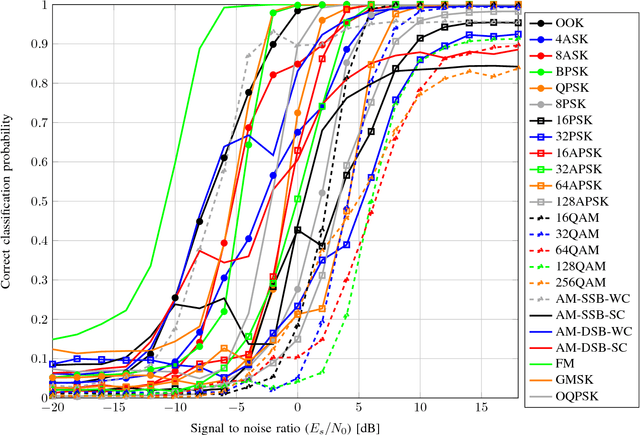Over the Air Deep Learning Based Radio Signal Classification
Paper and Code
Dec 13, 2017



We conduct an in depth study on the performance of deep learning based radio signal classification for radio communications signals. We consider a rigorous baseline method using higher order moments and strong boosted gradient tree classification and compare performance between the two approaches across a range of configurations and channel impairments. We consider the effects of carrier frequency offset, symbol rate, and multi-path fading in simulation and conduct over-the-air measurement of radio classification performance in the lab using software radios and compare performance and training strategies for both. Finally we conclude with a discussion of remaining problems, and design considerations for using such techniques.
* 13 pages, 22 figures
 Add to Chrome
Add to Chrome Add to Firefox
Add to Firefox Add to Edge
Add to Edge